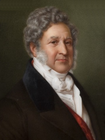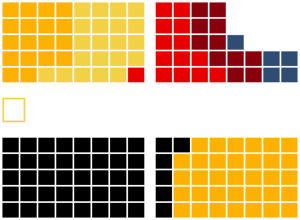Lagerhuis elections, 1684
| |||||||||||||||||||||||||||||||||||||||||||||||||||||||||||||||||||||||||
| |||||||||||||||||||||||||||||||||||||||||||||||||||||||||||||||||||||||||
| Turnout: 353,156 voters | |||||||||||||||||||||||||||||||||||||||||||||||||||||||||||||||||||||||||
| |||||||||||||||||||||||||||||||||||||||||||||||||||||||||||||||||||||||||
The Lagerhuis elections of 1684 were a heavily contested election. The Radicalen were blamed to have used the influence of the King, Arkadius IV, to win the elections. Gerrymandering, which had become a pretty common practice during the Sixth Kingdom, further ensured the dominance of a strong political faction in support of uncurtained powers for the King and his Franco-Batavian dreams.
The Montrarde cabinet of Jacques Montrarde remained (briefly) in power, with support of the Radicalen and CMP. The successes of the CMP in fulfilling their promises, made them the major party within the coalition. Talks about Benjamin Cambernon becoming the new prime minister were eventually shut down as tensions increased and the Lagerhuis believed that a military man would be better placed to handle any possible revolts.
However, with the popular King in power, protests were few, but once the King retired from power after the Amokolian Revolution, opposition demanded new elections. The social tensions led to a new election in 1685 AN and the outbreak of the Batavian Revolution.






